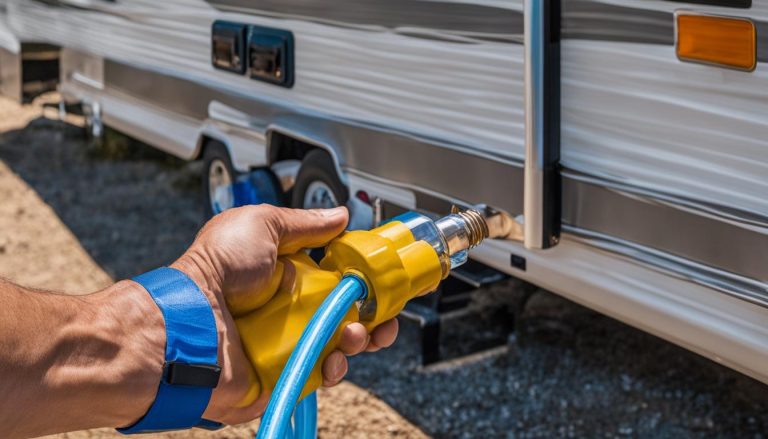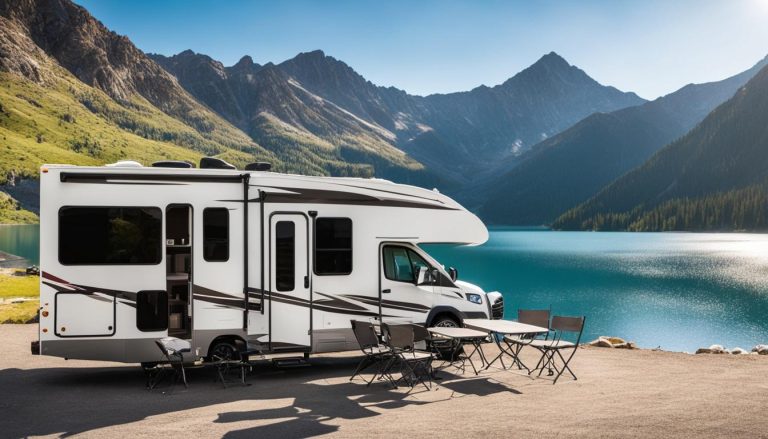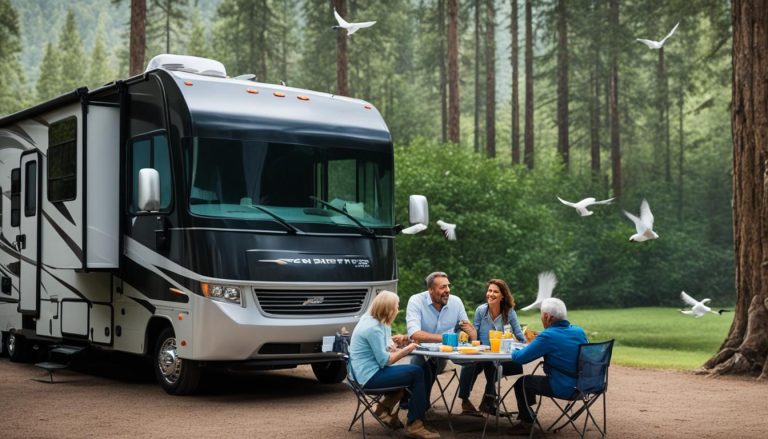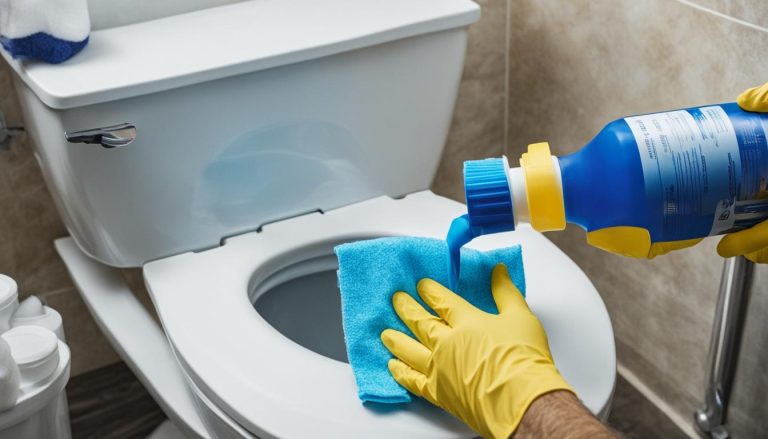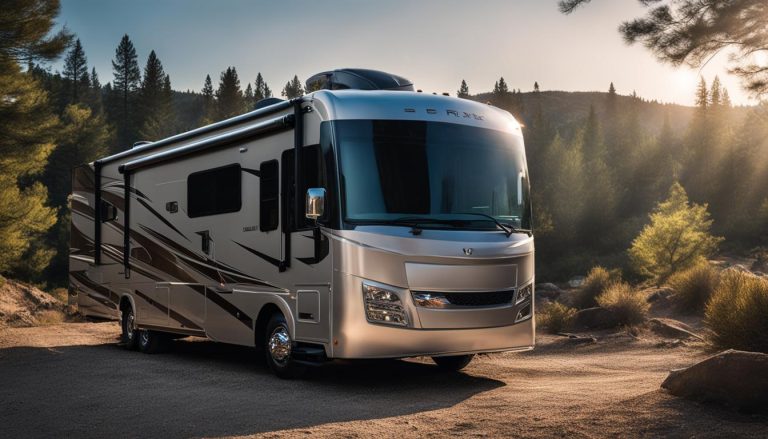>RV Fresh Water Tank Guide: Usage & Tips>
gorvlifestyle.com and its partners may earn a commission if you purchase a product through one of our links
Welcome to our RV Fresh Water Tank Guide! If you’re new to RVing or looking for tips on how to effectively use and maintain your RV’s fresh water tank, you’ve come to the right place. Your fresh water tank is a vital component of your RV’s water system, providing you with clean water for various purposes while on the road. In this guide, we will cover everything you need to know about using and maintaining your fresh water tank, from understanding the different types of RV water tanks to emptying and refilling your tank, as well as tips for maximizing your water supply.
- Understanding the different types of RV water tanks is essential for using your fresh water tank effectively.
- Emptying and refilling your fresh water tank should be done following proper procedures and using clean, potable water.
- Maintaining your fresh water tank with regular cleaning and proper precautions helps ensure its longevity and functionality.
- Maximize your water supply by practicing water conservation techniques and being mindful of your usage.
- By following these tips and guidelines, you can make the most of your fresh water tank while traveling in your RV.
Understanding RV Water Tanks
Recreational vehicles are equipped with three essential tanks: the fresh water tank, gray water tank, and black water tank. Each tank serves a specific purpose in maintaining and utilizing your RV’s water system effectively.
Fresh Water Tank
The fresh water tank stores clean, potable water that is used for drinking, cooking, and showering during your RV trips. It is crucial to fill this tank with a reliable water source before hitting the road.
Gray Water Tank
The gray water tank collects waste water from sinks and showers. As you use the water in your RV, it flows into the gray water tank. This tank requires regular emptying to prevent overflow and maintain a hygienic environment.
Black Water Tank
The black water tank holds waste water from the toilet. It is essential to follow proper disposal procedures for waste from the black water tank to prevent any health hazards and maintain cleanliness in your RV.
Understanding the purpose and function of each tank is vital to ensure the proper utilization and maintenance of your RV’s water system. Now that you know the basics of RV water tanks, let’s explore further tips and techniques to utilize your fresh water tank effectively.
Throughout your RV adventures, it’s important to make the most of your fresh water tank while being mindful of conservation and efficient usage. In the next section, we will provide a beginner’s guide to using your RV’s fresh water tank, including steps for filling, maintaining, and optimizing your water supply.
Emptying and Refilling Your Fresh Water Tank
Emptying and refilling your fresh water tank is an essential aspect of RV maintenance. Whether you’re just starting your journey or wrapping up a memorable trip, proper emptying and refilling practices ensure the longevity and functionality of your RV’s water system. Read on to discover the steps for using your fresh water tank on an RV and the best practices to follow.
The Steps for Using Your Fresh Water Tank on an RV
To effectively use your fresh water tank, consider the following steps:
- Wait until your fresh water tank is about two-thirds full before emptying it. The frequency of emptying will vary depending on your water usage during trips.
- When emptying your tank, utilize designated dump stations. These stations have proper facilities and procedures for efficient and safe disposal of waste water.
- Follow the recommended procedures for emptying your fresh water tank. This may involve opening specific valves or levers and ensuring a complete drainage.
- After emptying, clean the tank thoroughly to prevent any build-up or residue that may affect the quality and functionality of your fresh water system.
Best Practices for Using Your Fresh Water Tank on an RV
To ensure the best possible experience with your fresh water tank, the following practices are highly recommended:
- Always use a potable water hose when refilling your fresh water tank. This hose is specifically designed to provide clean, safe drinking water for your RV.
- Fill your fresh water tank with filtered water from a trusted source to minimize the risk of contaminants.
- If available, use a water filter in your RV’s water system to further enhance the quality of the water you consume and use.
- Regularly inspect and maintain your fresh water tank for any signs of damage, leaks, or malfunction. Promptly address any issues to avoid potential disruptions during your travels.
By following these steps and best practices, you can maximize the functionality and longevity of your fresh water tank on your RV, ensuring a seamless and enjoyable journey.
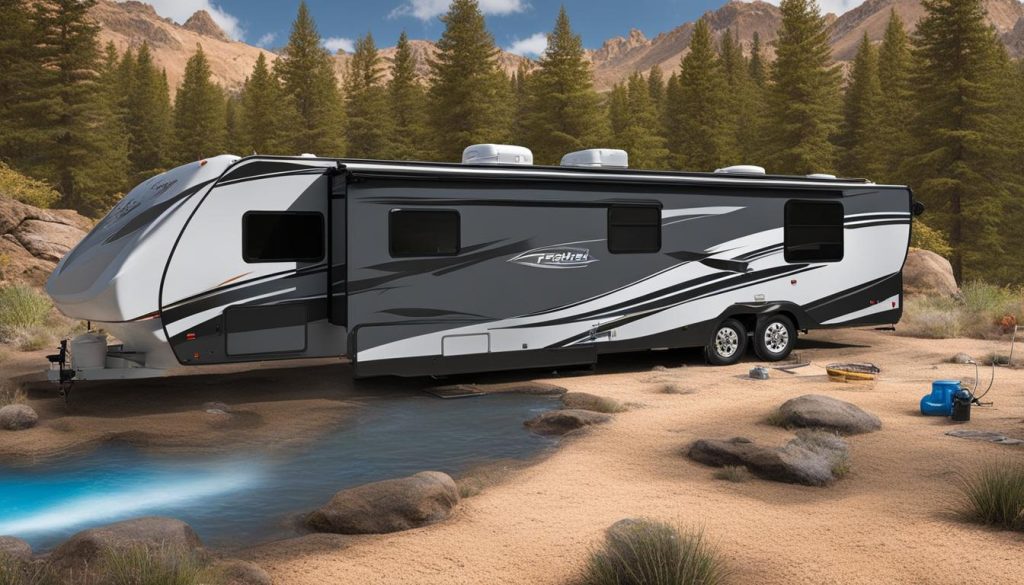
Maintaining Your Fresh Water Tank
Proper maintenance is essential for maximizing the usage and functionality of your RV’s fresh water tank. By following these essential tips, you can ensure that your water system remains in optimal condition throughout your travels.
- Regularly flush and clean your fresh water tank to remove contaminants and prevent odors. Mix a solution of bleach and water (1/4 cup of bleach per 15 gallons of water) and fill your tank. Let the solution sit for a few hours, then drain and rinse the tank thoroughly.
- Pay attention to the weather conditions to prevent freezing or water stagnation. During colder temperatures, insulate your tank and use a tank heater to avoid freezing. During warmer weather, be cautious of water stagnation that can lead to bacterial growth. Consider using a water agitator or regularly using and refilling your tank to prevent stagnation.
- Invest in a high-quality water filter to ensure that the water you fill your tank with is clean and free from contaminants. A filter will remove sediment, bacteria, and other impurities, providing you with fresh and safe water.
- Add a tank treatment product to maintain the cleanliness of your fresh water tank. These products help control the growth of bacteria and prevent the formation of algae and scale. Follow the manufacturer’s instructions for the recommended dosage and frequency.
- Be mindful of what goes down your drains to prevent clogs and keep your tank in optimal condition. Avoid disposing of food scraps, grease, or any other materials that can cause blockages or damage to your tank. Use drain strainers and periodically clean your sink and shower drains.
By following these essential maintenance tips, you can maximize your RV fresh water tank usage and ensure a clean and reliable water supply during your travels.

Tips for Maximizing Your Water Supply
When you’re on the road in your RV, it’s essential to make the most of your fresh water tank and practice water conservation. By following some simple tips, you can optimize the utilization of your fresh water tank and extend your water supply while traveling.
First, consider taking shorter showers to minimize water usage. This small adjustment can significantly help conserve water in your RV. Additionally, remember to turn off the tap while brushing your teeth or washing dishes. These habits may seem small, but they can make a big difference in reducing water waste.
Another effective strategy is to install water-saving devices such as low-flow showerheads and faucet aerators. These devices significantly reduce water flow without compromising your comfort. They are affordable, easy to install, and highly efficient in conserving water.
Furthermore, when you have the opportunity, take advantage of campground facilities for showers and laundry. Campgrounds often provide water-saving measures, such as low-flow showers and efficient laundry equipment, that can help you conserve water. This way, you can save water in your RV’s fresh water tank for other essential needs.
By practicing these tips and being mindful of your water usage, you can optimize the utilization of your fresh water tank on your RV. Whether you’re boondocking or staying at a campground, responsible water conservation ensures a more enjoyable and sustainable RVing experience.
FAQ
How do I properly use and maintain my RV’s fresh water tank?
To effectively utilize and maintain your RV’s fresh water tank, it’s important to understand the different types of RV water tanks, how often to empty your tanks, and the steps for filling and maintaining your fresh water tank. Regularly emptying and refilling your tank, properly maintaining it with regular cleaning and treatment, and practicing water conservation will help ensure the longevity and optimal functionality of your RV’s water system.
What are the different types of RV water tanks?
RVs typically come equipped with three tanks – fresh water, gray water, and black water tanks. The fresh water tank holds clean, potable water for drinking, cooking, and showering. The gray water tank collects waste water from sinks and showers, and the black water tank holds waste water from the toilet. Understanding the purpose and function of each tank is crucial for effectively using and maintaining your RV’s water system.
How often should I empty my fresh water tank?
The frequency at which you should empty your fresh water tank depends on your usage, but a general rule of thumb is to wait until the tank is about two-thirds full before emptying it. This helps ensure that you don’t waste water unnecessarily and allows for more efficient disposal at designated dump stations. Emptying your tank properly and following recommended procedures for waste water disposal are essential for efficient and safe RVing.
What steps should I follow for filling and maintaining my fresh water tank?
When filling your fresh water tank, make sure to use a potable water hose and fill with clean, filtered water from a trusted source. Regularly flushing and cleaning your tank with bleach can help remove contaminants and prevent odors. Additionally, paying attention to weather conditions, using a high-quality water filter, and adding tank treatment can help keep your water clean and fresh. Being mindful of what goes down your drains and preventing clogs will also contribute to the optimal condition of your fresh water tank.
How can I maximize my water supply while on the road?
Maximizing your water supply and practicing water conservation can help extend your RV’s fresh water tank usage. Taking shorter showers, turning off the tap while brushing your teeth or washing dishes, and using water-saving devices like low-flow showerheads and faucet aerators can all contribute to water conservation. Additionally, consider utilizing campground facilities for showers and laundry to conserve water in your RV. By being mindful of your water usage, you can make the most of your fresh water tank and extend your water supply while traveling.

